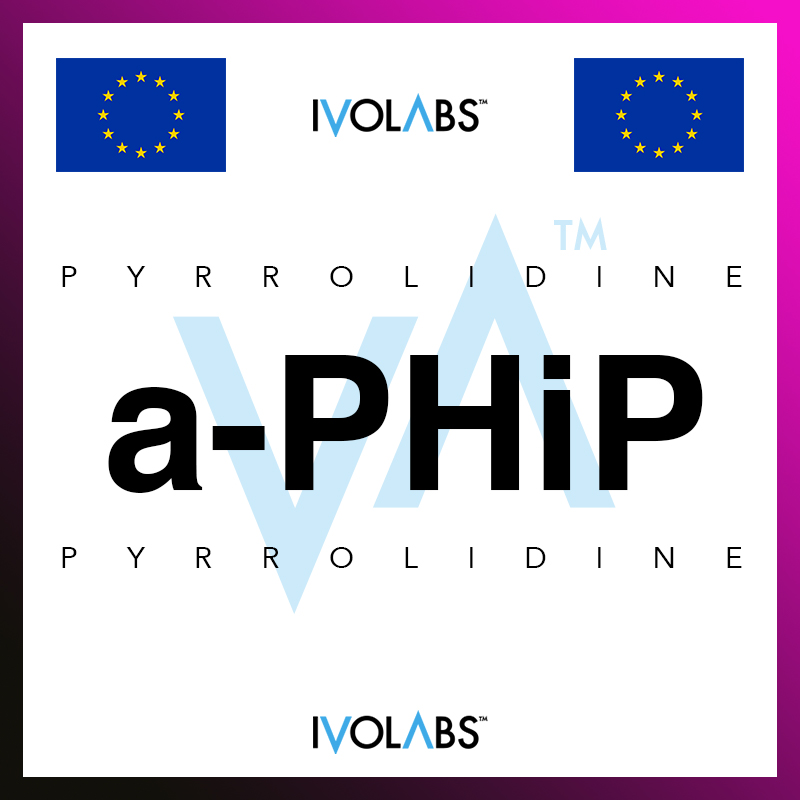3F-PiHP, or 3-Fluoro-Pyrrolidinoisohexaphenone, is a fascinating research chemical that belongs to the class of cathinones. As a novel substance, it is primarily used in forensic contexts and scientific studies due to its properties. It’s paramount to note that this detailed description is meant to provide extensive, scientifically grounded information about 3F-PiHP’s molecular structure, pharmacological properties, chemical synthesis, and storage, among other aspects. It’s crucial to underline that due to its designation as a research chemical, 3F-PiHP should not be used for recreational purposes or self-medication.
Chemical Identity and Molecular Structure
3F-PiHP is a chemical compound classified under the cathinone family, specifically as a substituted cathinone. The cathinones are naturally occurring substances found in the plant Khat (Catha edulis). The substituted cathinones, on the other hand, are a large family of amphetamine analogs which also include the synthetic cathinones, colloquially known as “bath salts.”
The systematic name for 3F-PiHP is 1-(3-fluorophenyl)-2-(pyrrolidin-1-yl)hexan-1-one. It features a hexanophenone core, which is a chain of six carbon atoms attached to a phenyl ring at one end and a ketone group at the other. The phenyl ring carries a fluorine atom at the third position (3-fluorophenyl), and the pyrrolidinyl group is attached to the second carbon atom of the hexane chain.
The pyrrolidinyl group, derived from pyrrolidine, consists of a five-membered ring containing four carbon atoms and one nitrogen atom. This structure is known for its unique chemical properties, contributing to the compound’s overall pharmacological profile.
Synthesis
The synthesis of 3F-PiHP requires a thorough understanding of organic chemistry and should only be performed by trained chemists under controlled conditions in a properly equipped laboratory. The process is broadly similar to that used to synthesize other substituted cathinones.
The general method involves a Grignard reaction, where a Grignard reagent (an organomagnesium compound) is reacted with a ketone to form a tertiary alcohol. This step is then followed by the reduction of the tertiary alcohol to the corresponding alkene. The pyrrolidinyl group is introduced into the molecule via nucleophilic substitution.
First, the appropriate Grignard reagent is prepared by reacting magnesium with a halogenated compound. This reagent is then reacted with the hexanophenone, creating a tertiary alcohol. The tertiary alcohol is reduced to an alkene using a reducing agent such as lithium aluminium hydride.
The final step is introducing the pyrrolidinyl group. This is accomplished via nucleophilic substitution, where a halogen atom on the alkene is replaced by the pyrrolidinyl group. This reaction is usually carried out in the presence of a base.
After the synthesis, the compound is purified by crystallization or other purification methods, and the final product is thoroughly analyzed using techniques like nuclear magnetic resonance (NMR), mass spectrometry, and infrared spectroscopy to confirm its identity and purity.
Pharmacological Properties
As a research chemical, the exact pharmacological profile of 3F-PiHP is not well-studied as of the time of writing. However, based on its structural similarity to other substituted cathinones, we can postulate certain properties.
Like other cathinones, 3F-PiHP likely acts as a central nervous system stimulant. Cathinones generally work by increasing levels of certain neurotransmitters in the brain, such as dopamine, serotonin, and norepinephrine. They achieve this by inhibiting the reuptake of these neurotransmitters, leading to increased stimulation of the neurons and resulting in effects like heightened alertness, increased energy, and euphoria.
The addition of the 3-fluorophenyl group might modulate the activity of 3F-PiHP, potentially altering its potency, selectivity, or metabolic stability. The presence of the pyrrolidinyl group may also affect the compound’s lipophilicity, impacting its ability to cross the blood-brain barrier and possibly contributing to a quicker onset of effects.
However, these are merely educated speculations. The actual pharmacological profile of 3F-PiHP may vary and should be studied more extensively.
Storage
As with most research chemicals, 3F-PiHP needs to be stored properly to maintain its integrity and effectiveness. It is recommended to store the compound in a cool, dry, and dark place, preferably in an airtight container. Exposure to heat, light, and air should be minimized to prevent degradation.
3F-PiHP, like other cathinones, can undergo hydrolysis, oxidation, and photolysis if not stored properly. These processes can degrade the compound, altering its chemical structure and potentially rendering it ineffective for research purposes.
The compound should also be stored in a safe and secure location, away from unauthorized access. Given its designation as a research chemical, it is critical that it is kept out of the hands of individuals who may misuse it.
Safety and Regulations
Given the lack of comprehensive studies about its effects and toxicity, 3F-PiHP must be handled with care. Direct contact with the skin or eyes should be avoided, and appropriate personal protective equipment, including gloves and safety glasses, should be used when handling the compound.
In terms of regulations, the legal status of 3F-PiHP may vary depending on the jurisdiction. In many countries, it falls under the category of ‘New Psychoactive Substances’ (NPS) and may be regulated under laws specific to these substances. Researchers intending to study 3F-PiHP should consult local regulations to ensure compliance.
In conclusion, 3F-PiHP represents an interesting compound for study in the field of forensic and pharmaceutical chemistry, given its classification as a substituted cathinone. Despite its potential for unlocking valuable pharmacological insights, it must be treated with respect and caution due to its designation as a research chemical and its probable central nervous system stimulant properties. Comprehensive understanding of its synthesis, properties, storage, and regulations is crucial for any potential research involving this compound.








***** (verified owner) –
next best thing to apihp
develop –
Thank you for your comment! It seems like you’re interested in 3F-PiHP and comparing it to APIHP. Both of these substances belong to the class of cathinones and are synthetic variants. While 3F-PiHP is a research chemical with a unique structure consisting of a chain of carbon atoms, a phenyl ring, a ketone group, a fluorine atom, and a pyrrolidinyl group, APIHP is another popular cathinone compound known as alpha-pyrrolidinoisohexaphenone.
Comparing the effects of 3F-PiHP to APIHP, it’s important to note that the exact effects of 3F-PiHP are not fully known and require further research. However, based on related substances, it is believed that cathinones like 3F-PiHP can stimulate the central nervous system by potentially increasing the levels of neurotransmitters such as dopamine, serotonin, and norepinephrine. This stimulation might lead to heightened awareness, increased energy, and feelings of euphoria.
It’s worth mentioning that research chemicals like 3F-PiHP and APIHP are intended for laboratory use only and should not be consumed or used by humans. It is crucial to adhere to local regulations and handle these substances responsibly.
Regarding the shipping of products from EU RC, as mentioned in the post, they are shipped to European countries only on Tuesdays via express mail without a tracking number.
Please remember to prioritize safety and strictly follow the guidelines and regulations when dealing with research chemicals.
Nolan31 (verified owner) –
Likes this one a lot! First time I tried the 3f-pihp. Great alpha for the price that arrived in 6 working Days to North Europe. All good 🙂
IVOLABS –
Thank you for sharing your experience with 3F-PiHP from EU RC. It’s great to hear that you found it to be a quality product at a reasonable price, and that it arrived in a timely manner to North Europe. Your feedback is valuable for others who may be considering trying this research chemical. Remember to always use research chemicals responsibly and in accordance with local regulations.